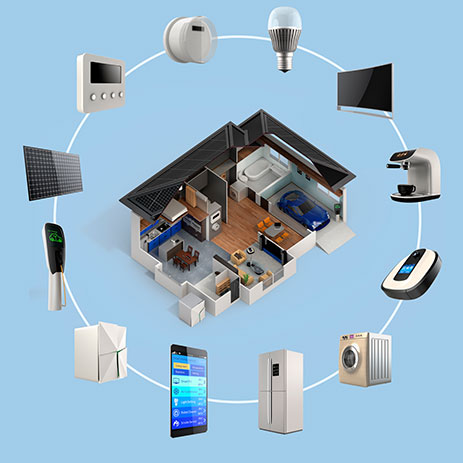Hidden costs of Smart Homes
Controlling our homes at the tap of a button may include hidden energy costs.
Our homes are getting smart. From voice controlled coffee machines to self-timing seemingly sentient ovens, innovative devices like these have been dubbed part of "the second digital revolution". They are just a few examples of "the internet of things" (IOT).
New ‘virtual helpers’ like Amazon’s Echo (Alexa) and the Google Home Assistant can do everything from turning on your lights to playing your favourite music.
These devices are new additions for most homes, consuming small amounts of energy in their own right, but adding to the energy demands of distant data servers.
 The estimated savings suggest that the newer technology could help households reduce their energy bills by 10-25%. The accuracy of these claims is largely uncertain however, because of a definite lack of “before and after” research.
The estimated savings suggest that the newer technology could help households reduce their energy bills by 10-25%. The accuracy of these claims is largely uncertain however, because of a definite lack of “before and after” research.
Research in fact shows that the opposite might actually be true. There are hidden ways in which energy demand is actually increased.
The true costs of IOT are consistently vague. This is partly due to the variety of impacts it could possibly have in the home, within distributed information infrastructures, and in the production, transportation and disposal of goods.
While IOT is still a very small part of this growth, its share is likely to grow substantially in the coming years.
It’s also quite likely that the increased energy demand means that it would need to be monitored and controlled from people’s homes, as far as data centres, control rooms and home networks. This would obviously take up a lot of space, as well as using up its own energy, and may additionally require air-conditioning or heating to keep it working as it should.
The new software for household appliances like fridges and washing machines means that frequent upgrades may become available, as seen with televisions and computers in recent years.
These devices all come with various levels of energy demand. They also convey information using the internet and make greater use of streamed media content, showing the internet’s growing energy usage.
This does not completely disregard the huge advancements that come along with this new technology, and IOT obviously has a lot to offer. The devices described above arguably have many benefits, however it’s wise to be wary.
Related News
BSRIA asks: Do smart meters still make sense?
Related Blogs
